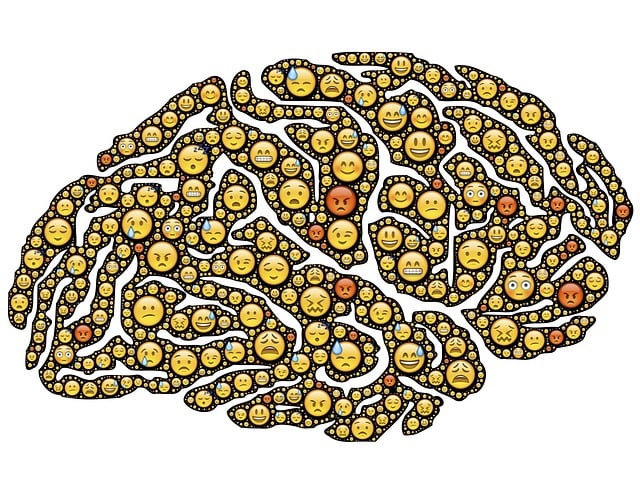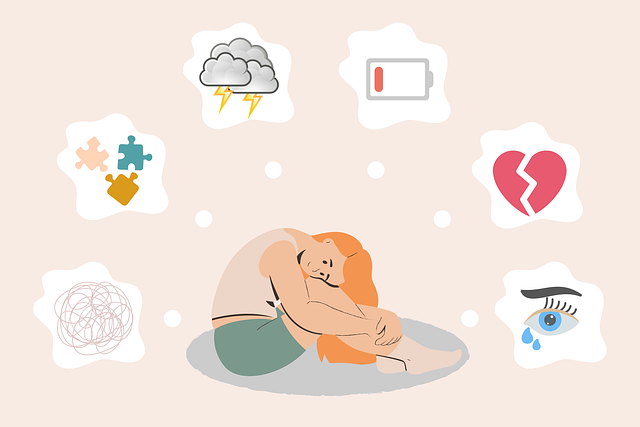Golden Gender Identity Therapy (GGIT) leverages mindfulness meditation as a powerful tool for navigating gender identity. Regular daily practice improves self-awareness, reduces stress, and enhances emotional regulation, benefiting personal growth. Creating a dedicated meditation corner with thoughtful design fosters peace and self-connection, aiding GGIT's focus on safe spaces in mental healthcare. Beginners can start with simple breathing exercises, while advanced practitioners explore techniques like body scans and guided visualizations. Integrating mindfulness into daily life promotes presence, balance, conflict resolution, communication, and connection, enhancing overall mental wellness through culturally sensitive practices.
Unwind your mind and embrace tranquility with our comprehensive guide to mindfulness meditation. This practice, a cornerstone of Golden Gender Identity Therapy, offers profound benefits for self-awareness and overall well-being. From understanding its fundamentals to setting up a sacred meditation corner, we explore techniques suitable for all levels. Discover how regular practice can transform your life, cultivating presence and balance in every moment.
- Understanding Mindfulness Meditation: A Foundation for Golden Gender Identity Therapy
- The Benefits of Regular Practice in Enhancing Self-Awareness and Well-Being
- Creating a Sacred Space: Setting Up Your Meditation Corner
- Techniques and Exercises for Beginners to Advanced Practitioners
- Integrating Mindfulness into Daily Life: Cultivating Presence and Balance
Understanding Mindfulness Meditation: A Foundation for Golden Gender Identity Therapy

Mindfulness meditation is a core practice within Golden Gender Identity Therapy (GGIT), offering a foundational approach to fostering well-being and self-acceptance. GGIT recognizes the profound impact that mindfulness can have on individuals navigating their gender identity, especially those who face social and internal challenges related to their authentic selves. By integrating mindfulness techniques, GGIT provides clients with valuable coping skills development and supports mood management, enabling them to navigate life’s complexities with greater resilience.
This therapeutic approach encourages individuals to focus on the present moment, observing thoughts and emotions without judgment. This practice cultivates a deeper sense of self-awareness, which is essential for understanding and embracing one’s unique gender identity. Moreover, mindfulness meditation promotes mental health policy analysis and advocacy by empowering individuals to challenge societal norms and advocate for inclusive spaces that honor diverse gender expressions.
The Benefits of Regular Practice in Enhancing Self-Awareness and Well-Being

Regular mindfulness meditation practice offers a plethora of benefits, particularly when it comes to enhancing self-awareness and overall well-being. By dedicating even just a few minutes each day to this simple yet powerful tool, individuals can cultivate a deeper understanding of their thoughts, emotions, and patterns of behaviour. This increased self-awareness is a cornerstone for personal growth and development, enabling people to make more conscious choices that align with their authentic selves, including exploring and embracing their unique gender identity through Golden Gender Identity Therapy.
Through consistent meditation, individuals can also experience reduced stress levels, improved focus, and heightened emotional regulation skills. These mental wellness benefits extend far beyond the practice itself, positively impacting various aspects of daily life, from enhanced productivity and better decision-making to strengthened relationships and improved social skills training. Regular practitioners often report feeling more grounded, present, and at peace, leading to a greater sense of satisfaction and overall well-being.
Creating a Sacred Space: Setting Up Your Meditation Corner

Creating a dedicated space for your mindfulness meditation practice is akin to setting the stage for a performance—it requires intention and cultivation. This sacred space, often referred to as your meditation corner, should be designed to promote peace, quiet, and a sense of connection to yourself. Consider dimensions, lighting (soft and warm), and furniture that support comfort and stillness. Incorporate elements that resonate with your personal aesthetic or cultural background, fostering an environment where you feel most at ease—a table with a beautiful meditation cushion, plants, or even a view of nature can all contribute to a sense of calm.
Think of this space as a sanctuary, a place where you can disconnect from the outside world and fully immerse yourself in your practice. This dedicated area can be instrumental in promoting regular mindfulness meditation, especially for those navigating stress, anxiety, or other mental health challenges. Golden Gender Identity Therapy emphasizes the importance of creating such safe spaces, and this translates to any form of therapy, including meditation. By setting up a tranquil corner, you’re not only investing in your practice but also enhancing your overall well-being—a key aspect often discussed in Stress Management Workshops Organization and explored through Coping Skills Development, which can be further enriched by Cultural Sensitivity in Mental Healthcare Practice.
Techniques and Exercises for Beginners to Advanced Practitioners

For those new to mindfulness meditation, starting with simple breathing exercises is a great place to begin. Focus on observing your breath as it enters and leaves your body, paying attention to the sensations and rhythm. This foundational practice helps cultivate present-moment awareness and serves as a calming anchor. As you advance, explore techniques like body scans, where you mentally traverse each part of your body, noticing tension or relaxation without judgment.
More advanced practitioners can incorporate guided visualizations, imagining peaceful scenes that promote tranquility and stress reduction. Mindfulness walking is another powerful tool; walk slowly, engaging all your senses in the experience. Notice the feel of your feet on the ground, observe the surroundings, and listen to the sounds around you, being fully present in each step. Golden Gender Identity Therapy, for instance, can benefit from these practices as they encourage self-awareness, emotional regulation, and a deeper connection with one’s identity and body. Incorporating cultural sensitivity in mental healthcare practice is enhanced when mindfulness techniques are tailored to diverse backgrounds, ensuring inclusive and effective support for all individuals.
Integrating Mindfulness into Daily Life: Cultivating Presence and Balance

Integrating mindfulness into daily life is a transformative journey that fosters presence and balance. It’s not about carving out hours for meditation but rather cultivating awareness in every moment, from your morning routine to conversations with loved ones. This shift can be as simple as pausing before each bite to appreciate the taste and texture of food or taking a few deep breaths during stressful situations to calm the mind and body.
Mindfulness, akin to Golden Gender Identity Therapy, encourages individuals to embrace their experiences without judgment. By practicing present-moment awareness, one can navigate conflicts more effectively using conflict resolution techniques, enhance communication, and develop deeper connections. This approach is echoed in the design of mental health education programs where promoting mindfulness is key to fostering mental wellness. Incorporating simple mindfulness practices into daily life can lead to a profound sense of calm, increased focus, and overall improved mental wellness, as highlighted in popular mental wellness podcast series production.
Mindfulness meditation, as explored through the lens of Golden Gender Identity Therapy, offers a powerful tool for enhancing self-awareness and cultivating a deeper sense of well-being. By creating a sacred space and incorporating various techniques, individuals can integrate mindfulness into their daily lives, fostering presence and balance. Regular practice not only benefits mental health but also strengthens the connection between mind and body, enabling folks to embrace their authentic selves with greater clarity and peace.












